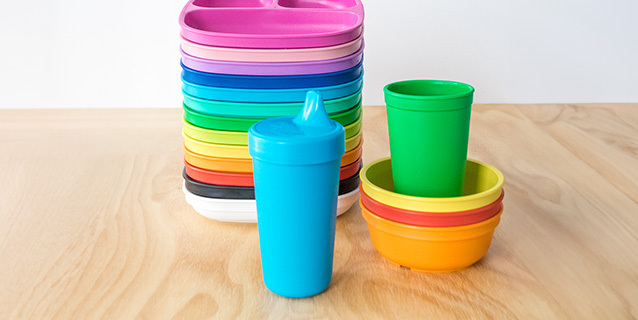Annette Faamausili is one of our Sleep Coaches and offers FREE sleep advice and support in The Sleep Store Toddler Facebook group. She also runs her own business Serene Sleep and has been advising and supporting parents for over two decades with a particular interest in toddler sleep. Her expertise lies in helping parents to gently and responsively navigate away from the often ingrained and seemingly impossible task of night weaning. She shares her knowledge and best tips in this easy-to-follow step by step approach allowing you to take it at your own pace.
Night Weaning Your Toddler From Breastfeeding
Are you ready to Night Wean?
Balancing the bond and need for rest. Firstly, you must decide if you are ready and if it’s the right time for you. There are no rules, expectations, and age limits when it comes to night weaning, although most toddlers are fully capable of sleeping overnight without a feed beyond 12 months of age. If you are happy feeding your toddler to sleep and are getting adequate rest, you can continue feeding for as long as you want.
Signs it’s time to think about Night Weaning
- You are ready and feel mentally prepared to embark on this journey.
- You are beginning to suffer from the lack of sleep both mentally and physically. Perhaps you are finding it hard to cope with day-to-day life and are feeling depressed, anxious, and less connected with your child.
- You are starting to harbour feelings of resentment towards your toddler because of the time and effort it requires to settle them overnight and the lack of personal space.
- It’s impacting your relationship with your partner. Perhaps you don’t have as much quality time together, or if you are co – sleeping with your toddler, your partner may even have moved out of the family bed.
- Older children are being disturbed and are missing out on your time in the evenings.
- Your daytime routine is changing, and you need to reduce reliance on breastfeeding for comfort rather than just nutrition. For example, your child might be about to start Daycare, or you might be returning to work, and the lack of sleep is no longer sustainable.
- Your child is not consuming enough solid food for their age and the frequent night feeds are interfering with calorie consumption during the day and your child is becoming a fussy eater.
- Another baby is on the way, you recognise that breastfeeding two children simultaneously will be challenging.
Before you get started, here are some important tips to follow:
- Set aside at least 2 weeks to fully commit to your new routine.
- Seek support from family members or friends so you can take a break to help ease the load.
- Trust, mindset, and consistency are key to your success. Remind yourself what a difference having more solid sleep will make to your life.
Step One
Establish a strong sleep foundation to help your toddler recognise when it’s time to sleep. Create predictable and consistent sleep cues that are tangible to your child such as using white noise, darkening the room, a sleep sack, stories, and cuddles. Introduce a comforter, such as a Cuski, to aid self-settling and wear it as much as possible to trap all your familiar comforting smells. Comforters are safe to use once your little one is over 7 months of age. Place it in between you and your child every single time you cuddle and feed them. That way your child will see it as an extension of you, be more likely to attach to it and be comforted by it while they drift off to sleep. Make sure your child is having the right amount of day sleep, appropriate to their age and bedtime isn’t too late to avoid them being overtired.
Step Two
Place a mattress next to your child’s cot so you can maintain closeness while they fall asleep and during night wakes.
Put your child to bed following their usual bedtime routine e.g. bath, stories, cuddle, and sleep sack. Offer a quick breast feed (5 minutes) then put them down awake in the cot and lie next to them until they’re asleep.
Try not to offer another feed as this will add confusion and undo all your hard work. Your child must fall asleep with the comfort of you beside them, rather than relying on the breast to induce sleep. Your emphasis should be physical touch, voice, and proximity instead of the breast. Ensure that the comforter is close by while they drift off to sleep.
Your child will likely resist the new routine and may become very cross and upset, but your proximity and touch will offer enough comfort and reassurance to enable them to fall asleep.
Repeat this process each time your child wakes in the night by offering a quick breastfeed then settle them back to sleep in the cot. Repeat the same process for day naps too.
NB: If your child has been co-sleeping with you, push their cot up against your bed with the cot side off, enabling you to maintain proximity during the settling process.
Your child may attempt to climb over you and into your side of the bed once the side has been removed. If this happens gently and consistently put them back into the cot. Your child needs to get used to falling asleep in their own designated sleep space knowing you’re close by. After a few nights you can put the side back on the cot.
This wonderful quote by Dr Jay Gordon provides reassurance and will help you to see things from your child's perspective.
"He will tell you that he is cross and intensely dislikes the new sleep routine. I believe him.
He will also try to tell you that he’s scared. I believe he’s cross, but not scared.
A baby who has had hundreds of nights in a row of cuddling, rocking, and feeding to sleep is not scared of falling asleep with your hand on his back and your voice in his ear”.
Angry, yes, scared no not really.
References: "Jay Gordon, MD, FAAP, 'Sleep, Changing Patterns in the Family Bed' Available at: https://www.drjaygordon.com/blog-detail/sleep-changing-patterns-in-the-family-bed (Accessed 23 February 2024).
Step Three
After a week or so (this can vary) your child should now be ready to drop night feeds altogether. Although this next step will be the hardest part of your journey, it marks your child's transition to independent sleep, leading to more solid sleep and a well-earned rest for you.
Continue with your child's usual bedtime routine, offer a final feed (can be replaced with a Sippy cup of milk if you wish to fully wean altogether) then pop them in the cot and continue to offer support until asleep. Each time your child wakes in the night, skip the breastfeed and settle them to sleep as before. Your child may take longer to fall asleep at first, expecting the breast, but consistency and your proximity will be your keys to success.
Step Four
Once your child is falling asleep with ease and sleeping longer stretches overnight, you can start to move them towards sleeping without you there all night.
If your child has been sleeping in your room, now might be the perfect time to consider moving them permanently into their own room if that is your end goal. Continue with your usual bedtime routine, but this time you’re going to step away from the room for brief intervals to help encourage them to fall asleep on their own.
You can choose one of the following techniques in the recommended articles below (pop outs or gradual withdrawal) to fully transition your toddler into sleeping independently.
N.B – each step can be taken at your own pace and every child responds differently based on their age and development. Follow a rhythm that aligns with your parenting style and expectations.
We asked some of our parents in our Toddler support group how they night weaned their toddlers. Here are some of their responses.
What night weaning strategies have worked for our customers?
Nel says:
We just weaned my 15m old and night feeds were the last ones after she had been off day feeds for a good 4-5m and bedtime boob since early December (she loves solids and never took to a bottle).
We went back and forth a little bit when we were travelling over Christmas, and she just needed that extra comfort but once back home she was all good to sleep without a feed. So would recommend no big trips or other dramatic changes to the routine at the same time.
She was much better than expected about it and I just offered her water in her box straw when she woke at night and gave her a cuddle to go back to sleep. She only asked for boobie the first 1-2 nights and never since even now that she’s got her first two molars cutting through.
Still not sleeping through the night but at least I don’t get bitten anymore.
Clare says:
We tried night weaning when my little girl was just over a year old. We moved the before bed feed to before bath, then after a short while, we dropped it altogether. Very little (if any) protest which I was surprised about. But that change came along with lots of changes to the sleep routine. At the start we were going to do one feed between midnight and 4am but she slept through that time, so we stopped overnight feeds completely right away. After that we soon dropped the midday feed, then the breakfast feed fell away naturally. Our girl was clearly ready and so was I. She started sleeping and eating so much better, so I was really happy with how things worked out.
Hannah says:
My 15-month-old went from waking 2 hourly to sleeping through the night in a very short time. We had got to the point where we figured her sleep couldn't get much worse so we may as well wean her. We stopped all but the 7pm and 7am feeds, offering her water in a bottle and cuddles instead. We were prepared to dig in for the long haul, but 1 night and 1 nap was all it took for her to settle into the new normal. And after I dropped that last morning feed, She stopped waking at 5 and slept until 6-7. It's been a game changer for us as a family.
Jess says:
I night weaned my boy at 18 months old. I was pregnant at the time, so my supply had dropped anyway. He was feeding up to 5 times per night. I slowly started cutting out one feed at at time. I’d offer him cuddles, rocking and water in a sippy cup instead. There were a few tears, but he gradually became accustomed to it, and I’d explain why, even though he probably didn’t understand. The whole process took about two months, and I kept the 5am feed until he was 22 months old. He started sleeping through once we dropped the night feeds which was amazing for a tired pregnant mum. He is now 3 years old and sleeps great, occasionally waking once in the night and will climb into bed with dad. I’m now co sleeping with his younger sister.
Elesha says:
At 24mo I began sitting next to my son’s cot and telling him no more boob but he could lie down and hold my hand. 25mins of protesting on the first night, a few minutes the next, maybe 10 the next night and then wasn’t really an issue. Now I still breastfeed before bed but in a different room. I still sit next to his cot at 26mo as I feel this age experiences a lot of separation anxiety. He can take 5-20mins to fall asleep. We’ve had patches of himself settling as a baby and toddler but around 20mo sleep got hard and feeding to sleep took over. I got a bit tired of it and the careful transferring and what I didn’t realise was affecting his night sleep and early wakes too. I was very proud of committing to this change and the progress we made in a short time. It can be done.





















